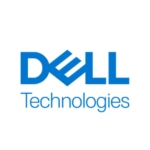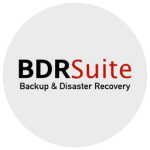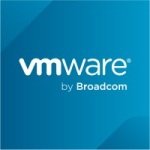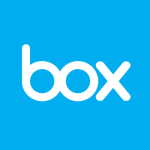What is our primary use case?
We needed a solution that would allow our 12 offices to collaborate from one central location of active business data that is continuously synchronized and backed up. This is the problem that Nasuni solved for us.
Our environment includes Nasuni's cloud-based file storage called UniFS, and at each site, we have a filer on-premise. Our normal SAN/NAS refresh cycle at each office location was 3 to 5 years. This IT work involved a lot of time, effort, and cost involving research, planning, and deployment of the properly sized SAN/NAS. With Nasuni, this hardware refresh cycle has literally stopped. Our capacity now scales on-demand.
How has it helped my organization?
Prior to Nasuni, each office had its own on-premises file server and there was no real collaboration on a single set of data. We had data silos operating independently at each location and when we would win a project, it was very difficult to collaborate between offices. Nasuni came in and looked at all our offices and data within our workflows and made the requisite recommendations. In the end, all of our active business data was consolidated and synchronized into one universal ‘global’ drive that was automatically backed up every 15 minutes and accessible by all staff in all offices.
With Nasuni, we have been able to replace multiple data silos and toolsets with a single global file system, which is important to us because we have been able to consolidate several different products and solutions. Prior to Nasuni, the normal mode of operations in IT was to employ several products to use with critical business data. For example, we have to store it, back it up, think about disaster recovery, and think about how different employees collaborate on the same data at the same time. Each of these problems required different products.
Nasuni solves your storage, backup, disaster recovery, and file sync/collaboration needs in one product/solution.
Thankfully, we have not had to use it for a ransomware attack or disaster situation. But the risk of data loss due to a ransomware attack is significantly mitigated knowing we can restore our data to within 15 minutes of the last Nasuni ‘snapshot’. We also use Nasuni on a weekly basis for simple file restores. With Nasuni, in two clicks you can restore a file.
Prior to Nasuni, we had a completely separate software package that we purchased for data backups. This is not required any longer. As such, our IT environment is simpler and more cost-effective.
We don't use Nasuni exclusively for VDI but we do have VDI components. This is very important to us because we've been using VMware for almost 20 years.
With regard to the simplicity of management, the Nasuni Management Console makes everything very simple. Related to that is the support that we received during our implementation, as well as the ongoing support that we get whenever we have any questions about configuration or otherwise.
Nasuni has helped to simplify infrastructure purchasing and support requirements, starting with the fact that we no longer do our regular SAN refresh every three to five years. Also, we are now dealing with one vendor, rather than multiple vendors for our storage solution.
Anybody that knows about storage products will understand how they just fill up because users create more data than you have a plan for. A storage upgrade is a big IT project and we haven't had to do one for almost three years. Having the benefit of being able to forgo one of these projects saves us hundreds of hours each time.
When compared to having to do SAN refreshes, Nasuni contributes positively to business agility. When you have to plan for an IT update project, it requires time and effort. With Nasuni in place, that need goes away because the technology automatically backs up the data, synchronizes it, and maintains version control for disaster recovery. From that perspective, the business is much more agile.
What is most valuable?
One of the most valuable features is scalability. As time goes on and we begin to run out of disk space, and we start planning for deployments and upgrades, Nasuni really helps. One of the things that we love about this product in IT is that it looks at your data and identifies what is active, or what is being worked on. We can set a threshold in terms of time where, for example, if the data has not been opened or touched for at least a year then it is automatically backed up to the cloud. By doing that, it's constantly keeping your file servers lean, which means that you don't have to regularly buy new storage upgrades.
Because we don't have to continue to buy storage as we did before, Nasuni has partially helped to eliminate our on-premises infrastructure. In this regard, it has reduced our SAN refresh costs. It is difficult to estimate how much we have saved because each office had its own SAN and storage requirements prior to Nasuni, and I would have to look into how much we paid for that infrastructure. Easily, we have saved six figures.
Aside from costs, Nasuni has reduced the amount of effort that we spend on our storage solution. The IT works and planning that's involved whenever you're doing a storage upgrade or a SAN refresh is significant. It becomes a month-long project. Having Nasuni manage active data versus inactive data has meant that we haven't bought a SAN since we implemented Nasuni in 2018.
Some of the other valuable features are collaboration and disaster recovery.
Nasuni gives us a single platform with a 360-degree view of our file data, which is very important to us. It is called the Nasuni Management Console and we have everything that we need to look at in a single pane of glass. From an IT administration standpoint, there's nothing worse than having to hop onto different toolsets or different solutions to manage different things. With regards to data management, specifically, we work through the Nasuni Management Console and everything is managed from there.
What needs improvement?
The speed at which new files are created is something that could be improved. For example, if you create a new file in another country, I won't see it for between 10 and 15 minutes. The length of time that it takes depends on the speed of the internet. If it were to drop from 15 minutes to two minutes, that would be fantastic. However, I understand that there are a lot of variables involved. As such, it's probably not just Nasuni but also the speed of the internet.
For how long have I used the solution?
We have been using Nasuni since November 2018.
What do I think about the stability of the solution?
Stability-wise, it has been top-notch. We haven't had any issues whatsoever. When we first implemented it, we had the occasional questions about the length of time required to create a new file. We thought that it might be quicker.
Nasuni is used daily. Literally, all of our business-critical data resides on it, so the availability has to be there 24/7/365.
What do I think about the scalability of the solution?
Scaling is just a matter of contacting Nasuni and telling them that we need more storage. After that, they allocate it. We're using Azure, whereas some people use Amazon AWS or Google. It doesn’t matter to Nasuni which ‘backend’ you use.
We have approximately 450 users and the roles range from engineers to project managers, to administration, marketing, IT, and finance. We don't have any plans to increase usage. As the company grows, it doesn't mean that we're necessarily going to be doing anything different. We may just have to buy more Nasuni storage.
We have a small IT team of approximately four people that was responsible for the deployment and takes care of the maintenance. There is not much maintenance that needs to be done. It involves system updates and going into the Nasuni Management Console to check log files.
How are customer service and support?
We received helpful support during our implementation, as well as ongoing support whenever we have questions. We also have access to Nasuni’s senior leadership team, which is fantastic!
Which solution did I use previously and why did I switch?
We did not use another product prior to implementing Nasuni.
How was the initial setup?
The initial setup is pretty straightforward. Nasuni comes in and they look at your data. They do an assessment and then they give you a report that estimates your sizing based on the total data that you have, as well as the amount of data that is actively being worked on at any given point in time. For example, you may have five terabytes of data but there is only 1TB that is being actively used.
With assistance from Nasuni in classifying our data as active versus inactive, we were able to then size a proper solution and purchase the right amount of storage that we need both in the cloud and on-premises.
The implementation strategy was just a matter of sizing the environment and then copying data from a traditional file server to the Nasuni file server. It took about a month for us to complete. This included sizing the environment for each location, making sure each one had a Nasuni filter, then communicating to staff that we were going to be moving data from one location to another.
The moving of data is something that we did on a weekend and the staff were told that when they came back to work on Monday, they would automatically be pointing to a different location for their data.
What about the implementation team?
Nasuni assisted us with the implementation. We did not rely on a third party.
What was our ROI?
Not having to purchase storage each year has helped to reduce our capital costs. We no longer have to do our SAN refresh cycles.
We analyzed our ROI when we first purchased the solution and although I can't share the actual costs, I can say that the primary savings are in the time and effort involved to do the SAN refreshes. This is not to mention buying the SAN in the first place. A safe estimate would be savings in the six-figure range.
What's my experience with pricing, setup cost, and licensing?
The cost of licensing is negotiated and billed annually per terabyte. Different clients have different pricing, depending on their agreements.
In general, the pricing is straightforward and it's an all-inclusive price with no surprises. There is no charge for additional features, add-ons, or otherwise. The fact that it's one price for all of the technology is something else that we like a lot about this product.
Which other solutions did I evaluate?
Prior to implementing Nasuni, we evaluated Panzura. It is the direct competitor in the market. In our opinion, the Nasuni technology was better. The cost for the product and the cost to implement was significantly less with Nasuni, although the primary reason that we chose it was the technology.
When we saw the demo, we were more impressed with what we saw with Nasuni as compared to Panzura. We were also much more impressed with Nasuni’s representation in terms of how they communicated with us promptly and honestly.
What other advice do I have?
When it comes to configuring Nasuni to support organizational changes, the technology is very easy to implement. What's more difficult in any organization is communicating and implementing workflow changes required due to the new data structure. Human nature dictates that we are naturally resistant to change, especially in an organization that has workflows in place for a long time. As such, be sure to involve as many key stakeholders in your company as possible in order to communicate the many benefits of the project. With proper buy-in, the chances of any IT project succeeding are greatly increased.
Today, all of our employees realize that we now have what's called a "global drive", and this is where all of the data can be found. What used to frustrate people, understandably, is that if we're collaborating, they would go to their local office's file server and it wouldn't be there. Rather than stored locally, a file might be on the "British Columbia" server, or instead on the "Alberta" server. Consolidating all of the data and then communicating to staff that there's only ever now one location where that data or that file can be found, really simplifies finding and retrieving the file that people are looking for. Data structure simplification through consolidation and classification goes a very long way to removing friction for the end user when trying to find a file.
I have recommended Nasuni to many colleagues, and I point out that if they have any sort of multi-site collaboration problem, or if they're thinking of disaster recovery, business continuity, or backup solutions, or if they're tired of refreshing their SAN, then Nasuni is an excellent choice.
My advice for anybody who is implementing Nasuni is to take your time at doing the assessment and classifying your data. This is something that Nasuni helps with. Then, once you have a good understanding of the data classification, take time to get an understanding of everybody's workflow and what they expect things will be like post-change. If this is done correctly and you take your time then the implementation will go a lot smoother. If instead you just rip off the band-aid and do something, and then people wake up Monday and there are all sorts of changes, chaos is imminent.
I would rate this solution a ten out of ten.
Which deployment model are you using for this solution?
Hybrid Cloud
If public cloud, private cloud, or hybrid cloud, which cloud provider do you use?
Microsoft Azure
Disclosure: PeerSpot contacted the reviewer to collect the review and to validate authenticity. The reviewer was referred by the vendor, but the review is not subject to editing or approval by the vendor.

















